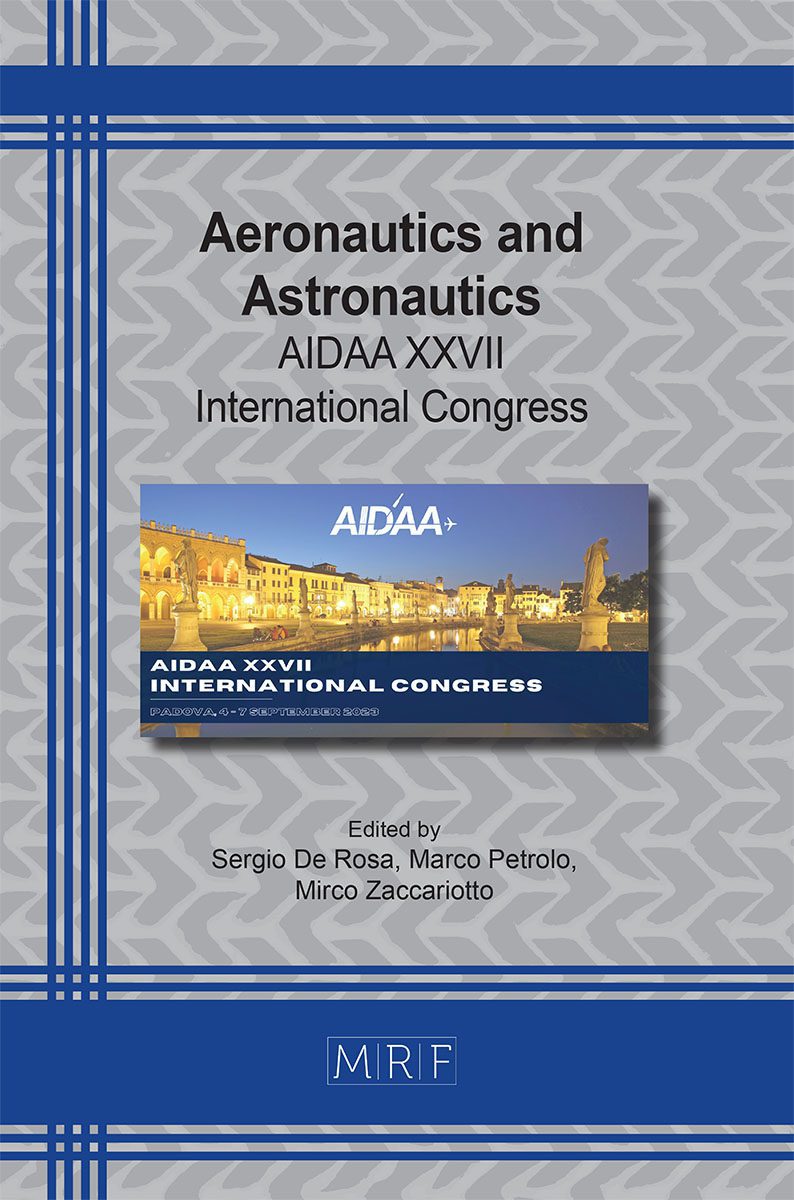Assessment and optimization of dynamic stall semi-empirical model for pitching aerofoils
Enrico Galli, Gregorio Frassoldati, Davide Prederi, Giuseppe Quaranta
download PDFAbstract. Dynamic stall is a phenomenon affecting aerofoils in unsteady flows which is particularly relevant in the helicopter field. Semi-empirical models are reliable tools to simulate this phenomenon, especially during preliminary design phases and for aeroelastic assessments. However, they need a large number of tuning parameters to provide reliable estimations of unsteady airloads. To face this problem, a parameter identification procedure based on sequential resolutions of optimization problems by means of a Genetic Algorithm is developed and it is applied to the state-space formulation of a modified version of the so-called “Second Generation” Leishman-Beddoes model. The effects of the optimal parameters on the model prediction capabilities are discussed and the variability of the parameters with reduced frequency is studied. The estimations of the unsteady airloads obtained by applying the optimization of parameters show a great improvement in the correlation of the experimental data if compared to the predictions obtained by using the parameters provided in literature, especially for pitching moments where the negative peaks are very well described. These improvements justify the need for optimization to set the parameters.
Keywords
Dynamic Stall, Helicopter Rotors, Optimization
Published online 11/1/2023, 5 pages
Copyright © 2023 by the author(s)
Published under license by Materials Research Forum LLC., Millersville PA, USA
Citation: Enrico Galli, Gregorio Frassoldati, Davide Prederi, Giuseppe Quaranta, Assessment and optimization of dynamic stall semi-empirical model for pitching aerofoils, Materials Research Proceedings, Vol. 37, pp 156-160, 2023
DOI: https://doi.org/10.21741/9781644902813-34
The article was published as article 34 of the book Aeronautics and Astronautics
![]() Content from this work may be used under the terms of the Creative Commons Attribution 3.0 license. Any further distribution of this work must maintain attribution to the author(s) and the title of the work, journal citation and DOI.
Content from this work may be used under the terms of the Creative Commons Attribution 3.0 license. Any further distribution of this work must maintain attribution to the author(s) and the title of the work, journal citation and DOI.
References
[1] C. T. Tran, D. Petot, Semi-empirical model for the dynamic stall of airfoils in view of the application to the calculation of the responses of a helicopter blade in forward flight, Vertica 5 (1981) 35-53.
[2] D. A. Peters, Toward a unified lift model for use in rotor blade stability analysis, Journal of the American Helicopter Society 30 (1985) 32-42. https://doi.org/10.4050/JAHS.30.3.32
[3] G. Dimitriadis, Introduction to nonlinear aeroelasticity, first edition, John Wiley & Sons Ltd, Chichester, West Sussex, UK, 2017.
[4] J. G. Leishman, G. L. Crouse, State-space model for unsteady airfoilbehavior and dynamic stall, Technical Report Paper 89-1219, AIAA, 1989. https://doi.org/10.2514/6.1989-1319
[5] Matlab, Genetic Algorithm Toolbox, https://it.mathworks.com/help/gads/genetic-algorithm.html.
[6] W. J. McCroskey, K. W. McAlister, L. W. Carr, S. L. Pucci, An experimental study of dynamic stall on advanced airfoil sections, Volume 1, 2, 3, Technical Memorandum TM-84245, NASA, 1982.































